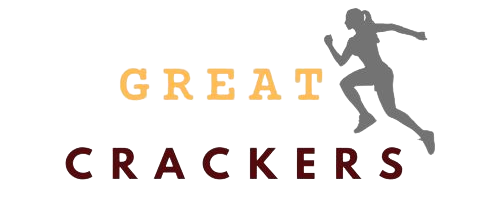16 Matrix Organizational Structure Advantages and Disadvantages [Types & Examples]
There are different types of organizational structures a company can decide to adopt. But a matrix organizational structure is a special way of organizing a company whereby employees have more than one boss.
And that means they have to report what they are doing to different parts of the company.
So in this post, you’ll learn what matrix organizational structure is, its characteristics, pros, and cons.
What is the Matrix’s Organizational Structure?
Often, this particular structure of an organization is used in large companies, having many parts working together on one project. In other words, employees in a matrix organization structure get placed in functional departments (like engineering, finance, marketing, etc.) and a project team.
The reason is that individuals are accountable for meeting obligations to the functional department and project team, leading to conflicting demands and priorities. Although, a matrix structure enables the organization to balance competing demands from both groups, ensuring efficient and effective resource utilization.
However, unlike the functional organization structure, the matrix structure helps companies change and be ready for new things.
And, of course, people from different parts of the company work together to finish a project. That means they talk and work together more. But sometimes, that can make it harder to make decisions because more people are involved.
Imagine your child or your younger sibling and his (her) classmates are planning a surprise party for their teacher. Chances are that they would apportion tasks like bringing balloons, making a cake, or decorating the classroom amongst themselves. And that may be because of their special skills, job, or otherwise.
Interestingly, that similarly is like a matrix organizational structure. Because each worker belongs to two groups– having a skill or job and being part of the overall party planning team, like the case of your younger sibling.
That’s because everyone has to do a good job with their task. But also work together with the rest of the team to ensure the success of their teacher’s party.
Matrix Organizational Structure Advantages And Disadvantages
With that said, in this section, you learn the pros and cons of matrix organizational structure under a separate heading.
Advantages Of Matrix Organizational Structure
Matrix organizational structure is a unique combination of traditional functional and product-based structures that offer various benefits, including:
1. Flexibility
A matrix structure is a type of organization that helps groups become more flexible, making it easy to change or adjust when things are different than before.
So, if your company uses a matrix structure, it can easily switch resources or helpers to more needed areas. For instance, when the need for more people suddenly arises on your group’s new project, you can move helpers from other areas to that project without real big problems.
That way, your group can work together and get things done faster and better!
2. Better utilization of resources
With a matrix structure, people from different teams can work together to complete a project, just like how you work with various colleagues on different projects.
That way, your company can use all its resources better, reduce waste and make your group (you and your colleagues) work more efficiently.
Yes, you can liken that to working on a project with people from different departments. Because in doing so, you can share knowledge and ideas, just like when youngsters work with their friends on a big sandcastle.
More importantly, that helps a group build better things and get their work done faster and better!
3. Improved Collaboration
With a matrix structure, individuals can work on a project with others from different departments. And that encourages cross-functional collaboration, which is a great way to share knowledge and ideas.
Not only that. When workers work together, they can learn from each other and understand how their work fits into the bigger picture. That’s because it’s like playing a team sport like basketball. You (like everyone else) need to work with your teammates to pass the ball and score points– and ultimately win the game.
Similarly, a matrix structure allows employees to achieve their goals while improving their work quality. By simply communicating and working well with one another.
4. Increased creativity and innovation
In a matrix structure, people from different parts or units of the company work together on a project. And since each has their way of doing things and has relevant yet different knowledge.
Interestingly, that’s the reason a company with a matrix structure solves problems better and faster. I mean, what do you expect? It’s like solving a difficult puzzle alone.
But you’ll agree that when you and your friends work together at cracking out this puzzle, the process becomes less stressful, yet fun and faster.
5. Better decision-making
Recall the phrase, “two heads are better than one.”
The decision-making process becomes more thorough and informed when people from different parts of the company are unanimously involved. It’s like when you and your friends work together to pick what game to play.
That’s because while everyone has their ideas when you talk or decide together with your friends or colleagues, you can pick the best game for everyone to play.
In the same way, when workers from different departments or units of the company work together to share their ideas and opinions to make better decisions. The outcome is usually the best possible solution.
That’s because you can’t neglect that decisions made by a group are often better and more creative.
6. Improved Project management
In a matrix structure, the company can choose the best people with the right skills to work together on a project. That’s true as the experience you had in college when you and your classmates had to work on a group project.
And accordingly, you can choose who will work on each part of the project based on their strengths and skills to ensure that the project turns out well.
7. Better Alignment With Business Goals
Since different groups work together on projects in a matrix structure, employees usually channel the necessary efforts to ensure each part fits together, taking the company’s goals into perspective.
Yes, it’s like when a third grader and his friends are building a fort. They all have to work together and ensure each part fits together, just like the different groups in a matrix structure have to work together to ensure everything fits with the company’s goals.
8. Better Job Satisfaction
While working in solitude for a prolonged time can lead to boredom and reduced motivation, workers in a matrix structure tend to find their job interesting and exciting. That’s because they get to work on different projects involving colleagues from other parts or departments of their company.
In other words, being a worker in a matrix organizational structure can help you feel happier with your job and less likely to quit.
Because it’s like when you’re privileged to play different games or try various activities, it makes things more fun and interesting. Particularly if you’re seldom a conservative person.
Matrix Organizational Structure Disadvantages
While the matrix organizational structure has many benefits, it also has some disadvantages, including:
1. Conflicting priorities
As already explained, a matrix structure is often adopted when a company has a lot of different projects to execute. And often, people are in charge of more than one thing.
While that may appear essential in a matrix structure, it can be tough. Because workers have to ensure they do all their jobs right, even though the trouble of picking which job is the most important is inherent. Leaving them to worry.
For example: in a software development company with a matrix structure, developers must balance their functional duties with project requirements. That’s they must work under both a functional manager and a project manager to ensure successful project completion.
But without clear roles and communication channels, they may become confused and less efficient. However, everyone knows what their jobs are so they can do them well. And that, in turn, helps them improve the company’s bottom line.
2. Complexity
Indeed, a matrix structure is when people work in different teams and have different bosses, which can be confusing and hard to manage. And this is often used by big companies that need to work together to finish projects.
But to do this well, leaders need to be good at making decisions, talking with people, and solving problems. That’s because they need to ensure everyone knows what they are supposed to do and work together to get things done on time.
3. Increased Bureaucracy
Things can become more complicated in companies that use a matrix structure. That’s because employees may have more than one boss or manager, meaning that there are more levels of management.
And unfortunately, that can make it harder to make decisions quickly.
For example, if you, as an employee, have two managers with different ideas about how to do a project, it can be difficult to decide which one to listen to. And that can lead to more bureaucracy– meaning that there are more rules and regulations to follow.
And sadly, that can make the decision-making process slow and cumbersome.
4. Role Ambiguity
When people work in a matrix structure: they may have difficulty knowing what they should do and to whom they report. And that can make them feel confused, worried, and unhappy about their job.
However, the organization must tell employees what they need to do and who to talk (report) to. That way, they help them to work better and feel better about their job.
5. Resistance to Change
Introducing a matrix structure can be hard for employees because they might have to work with different teams and change how they work. While some people may worry about what it means for their job, others may feel it’s unfair.
And if they don’t get help or support, they might feel unhappy and not work as well. But to help employees adjust, organizations need to tell them why the changes are happening and how they will affect them.
Not only that. The management team may also need to teach employees new skills and render help (to them) if they need it. Apart from that, organizations should also listen to employees’ ideas and thoughts so that they feel happy and supported during the change.
6. Power Struggles
In a matrix structure, there are two types of bosses: one who oversees different teams; and the other who leads a special project. And consequently, they might compete for things or resources like workers or money. And that can create friction and a fight for power.
For example, a project boss might want to use someone from another team, but the other boss might not want to let them go.
And this fighting for power can make the bosses not work well together, and employees might not know who to listen to. And if that happens, people might not do a good job or feel enthusiastic about their work.
So to stop this from happening, bosses should talk more and share things. Even as the company makes rules for how to make decisions and share resources.
7. Difficulty in Measuring Performance
In a matrix structure, employees may work on different projects with different managers, which makes it tricky to see how well they are doing.
And while some projects may be more important than others, it’s hard for employees to know who should measure their performance. And these can make it difficult for them to get feedback, and they may not feel good about their jobs.
But to solve these problems, the company should create a plan to see how well everyone is doing. And that involves managers talking to workers often about their work and how (and where) they can improve.
Fortunately, when a company does these regular check-ins, managers can see how employees are doing and where they need more help.
8. Increased Stress
Since employees may have to work on many things at once and have many bosses in a matrix structure, it can be difficult for them and make them feel stressed.
And they might feel like they have to work extra hard to keep their bosses happy by meeting their needs. Because different bosses may want different things, leading to problems and making employees feel like they are not doing a good job.
But to help with stress, the company (through its management team) can give the training to help workers manage their time and encourage good communication between bosses and workers. Even as they offer mental health support, like counseling or support groups.
Types Of Matrix Organizational Structure
There are three common types of matrix organizational structure:
1. Weak Matrix Structure
In this type of matrix structure, the power and authority of the functional manager are stronger than that of the project manager.
Here, the project manager is responsible for coordinating with the functional manager and ensuring that the project gets completed within the given time and budget. However, the functional manager retains most of the decision-making power.
An example of a weak matrix would be a software development project. While the project manager is responsible for planning and coordinating the project, the functional manager has more authority over the project’s resources, such as software engineers.
In other words, in this case, the project manager would have limited control over the resources and would rely on the functional manager to provide support and assign tasks to the software engineers.
2. Balanced Matrix Structure
As the name implies, a balanced matrix structure is this type whereby the power and authority of the functional manager and project manager are balanced.
In other words, in a balanced matrix, there are two bosses: one is the project manager who leads the project, and the other is the functional manager who is responsible for the workers.
As a result, they both work together and make decisions to complete the project successfully. None of the bosses has more power than the other.
3. Strong Matrix Structure
In a strong matrix, the boss who runs the project has more power than the boss that’s managing the team. And this boss is in charge of deciding what to do and assigning jobs to people. The other boss helps the project boss and gives advice.
What Are The Characteristics Of A Matrix Organizational Structure?
Now that we’ve looked at the pros and cons of matrix organization structures, it is time to consider the characteristics of matrix structures and their effects on project success.
Some of the key characteristics of matrix organizational structures include:
1. Dual Reporting Lines
When employees have dual reporting lines, it means they have more than one boss or manager. They might have to report to two different departments or teams in the same company.
2. Project-based Focus
In some organizations, people work together on special projects, and sometimes they use a matrix structure to help them. And that means that different teams with different jobs can work together on the same project.
3. Cross-functional Teams
In a matrix organization, people with different jobs and skills come together to work on a project. In other words, some teams have people from different parts of the company.
4. Shared Resources
In a matrix structure, teams and departments share resources like people and equipment, which means they may work together on different projects.
5. Flexibility
Matrix organizational structures are built to be adjustable so companies can adapt to new circumstances and modifications in the business environment more efficiently.
6. Complex Decision-Making Process
For matrix organizations, making decisions can be complicated because many people may need to be involved in the decision-making process. And that’s because employees have more than one boss, so different people may have different opinions on what should be done.
Thus, everyone must work together and communicate well to make the best decisions.
7. Increased Communication
In a matrix organization, people from different parts or departments of a company work together on projects. And that means they have to talk to each other and work together to get things done.
8. Emphasis on Collaboration
In a matrix organization, people from different parts of a company work together to get things done. And this means they must talk to each other and work as a team to complete a project. Everyone needs to work together and be a good team player to make the project successful.
Example Of A Company With A Matrix Organizational Structure
There are many examples of a company with a matrix organization structure, but we shall look at a few below.
One of them is Procter & Gamble (P&G).
Procter & Gamble (P&G) is a big company that makes many different things like soap, cleaning supplies, and baby products.
Of course, they work in many different places around the world. And to consistently achieve that, P&G has a special way of organizing its employees called a matrix structure.
That way, as a company, it works better and faster by having people work together on projects based on what they’re good at and where they are in the world.
For example, imagine you want to create a new soap that you want to sell around the globe.
First, you must realize that making soap is not just one person’s job. You need many people to work on different parts of the soap. Some people will work on making the soap smell nice: others will work on making the soap shape good, and others will work on making sure the soap is safe to use.
Also, you need people in various places across the globe to help you sell the soap in their countries.
Interestingly, that’s the same reason P&G company uses a structure that helps all these people work together, so they can make the soap and sell it successfully.
Another example of a company that adopts the Matrix structure of an organization is ExxonMobil
ExxonMobil is an oil and gas company that operates in multiple regions of the world. Its matrix structure allows it to balance its focus on exploration and production activities with a great focus on refining and marketing activities.
With all that said, one example of a Nigerian company with a matrix organizational structure is Nestle Nigeria Plc.
Yes, Nestle Nigeria is a food and beverage company that operates in various markets across Nigeria, producing and distributing a wide range of products such as Milo, Nescafe, and Maggi.
In its matrix structure, employees are organized both by product line and function. And that allows the company to respond quickly to market changes and allocate resources where needed most. Even while it ensures that all workers are in alignment with the company’s overall business goals and objectives.

![Matrix Organizational Structure Advantages and Disadvantages [Types & Examples]](https://greatcrackers.com/wp-content/uploads/2023/02/Matrix-Organizational-Structure-Advantages-and-Disadvantages.jpg)

![Things You Should Know About Digital Marketing in Nigeria [Explained]](https://greatcrackers.com/wp-content/uploads/2022/04/Salary-of-Digital-marketers-768x1152.jpg)



